Abstract
The effect of temperature and retention time on the rate of methane production from waste of beef cattle fed a finishing diet was investigated by using continuously mixed 3-liter working volume anaerobic fermentors. The temperatures ranged from 30 to 65°C with 5°C increments between fermentors. The fermentors were fed once per day with 6% volatile solids (organic matter). Retention time for each temperature was varied from 18 to 2.5 days. After 3-volume turnovers, samples were obtained on 4 consecutive days. The highest methane production rate (liters/liter of fermentor per day) and methane yield at that rate (liters/gram of volatile solids) were 1.27 and 0.19 at 9 days and 30°C, 1.60 and 0.16 at 6 days and 35°C, 2.28 and 0.23 at 6 days and 40°C, 2.42 and 0.24 at 6 days and 45°C, 2.83 and 0.14 at 3 days and 50°C, 2.75 and 0.14 at 3 days and 55°C, 3.18 and 0.14 at 2.5 days and 60°C, and 1.69 and 0.17 at 6 days and 65°C. Volatile solids degradation at these retention times and temperatures was between 46 and 54%. The concentrations of volatile acids in the 30 to 55°C fermentors were generally below 2,000 mg/liter, with the exception of the 3-day retention time. The 60 and 65°C fermentors were usually above this level for all retention times. These studies indicate potential rates of methane production from the fermentation of untreated waste of beef cattle fed high-grain finishing diets. This information should serve as preliminary guidelines for various kinetic analyses and aid in economic evaluations of the potential feasibility of fermenting beef cattle waste to methane.
Full text
PDF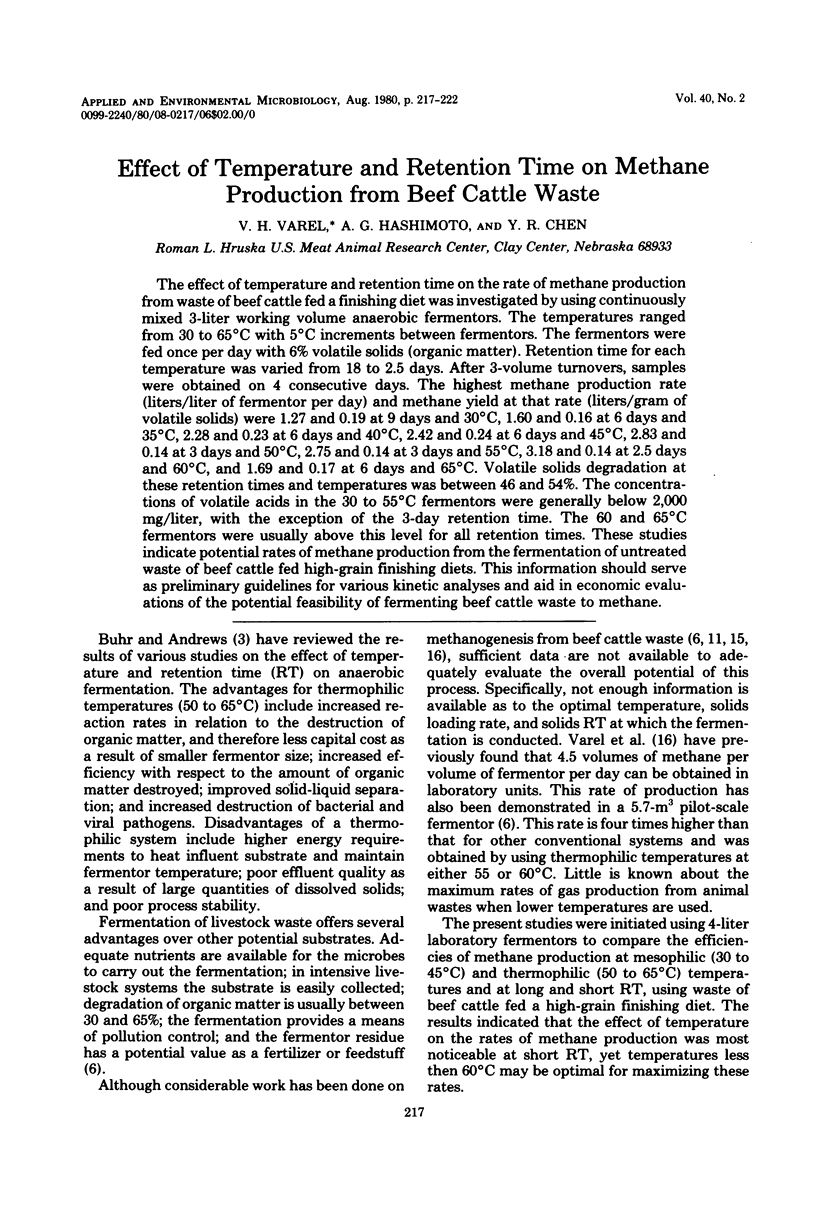
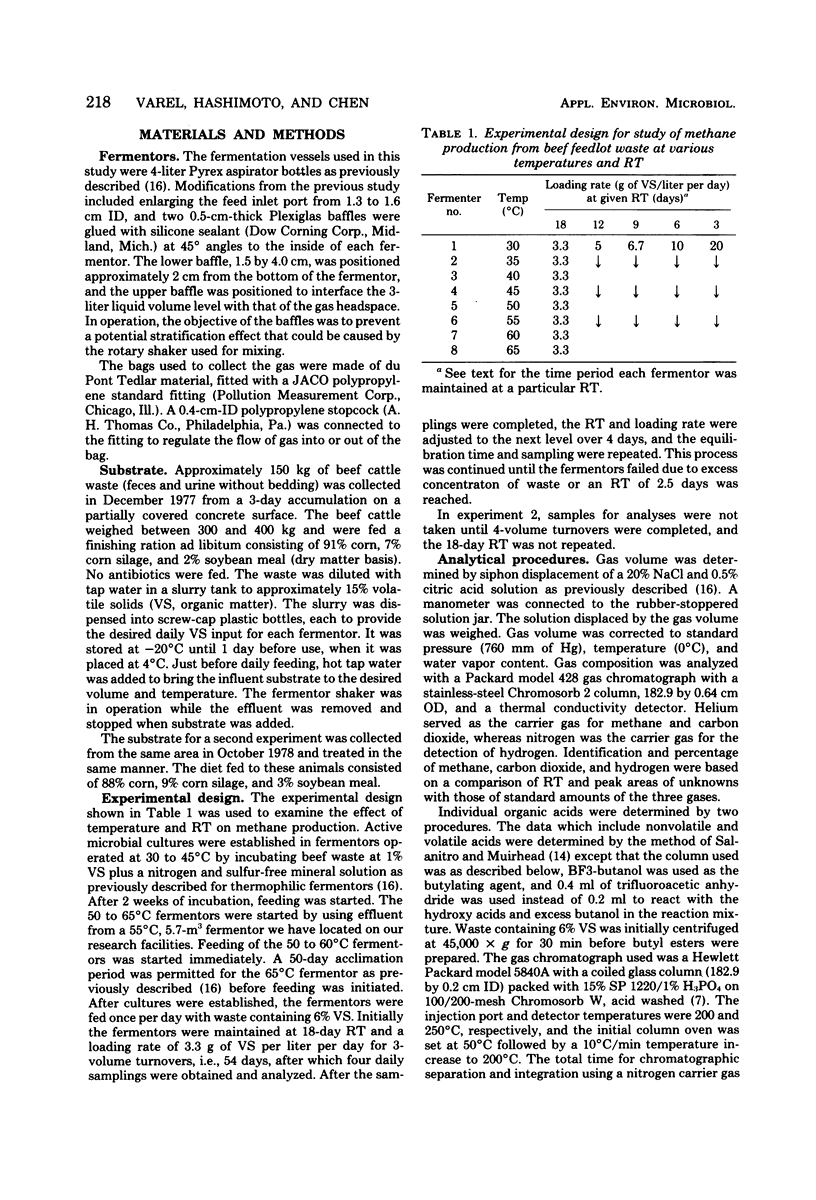
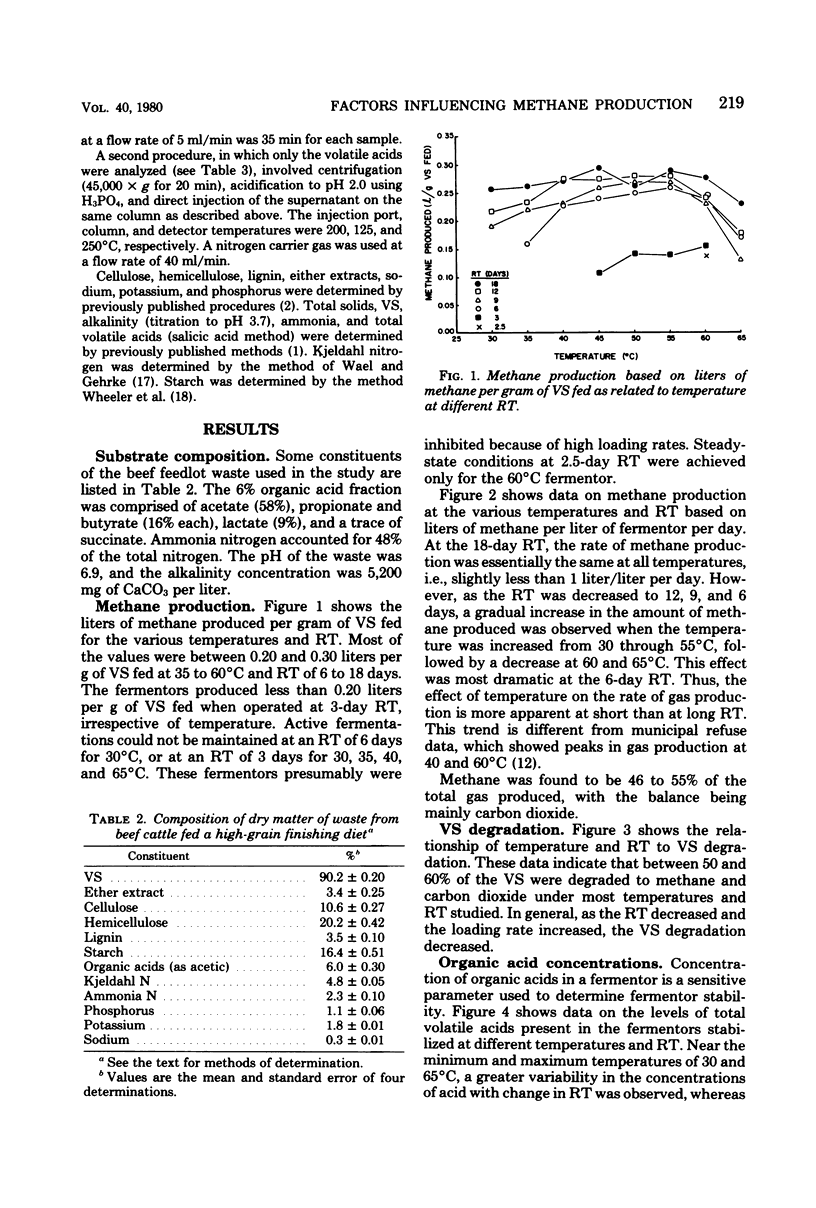
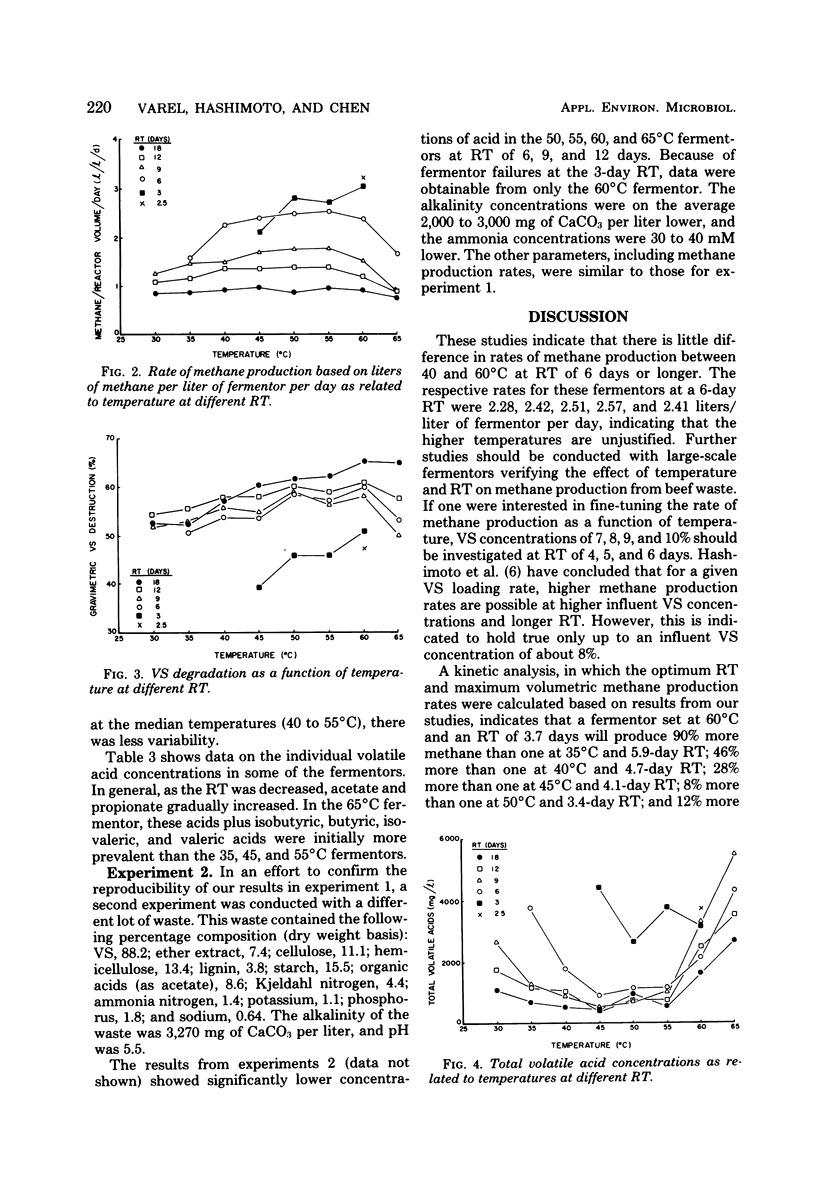
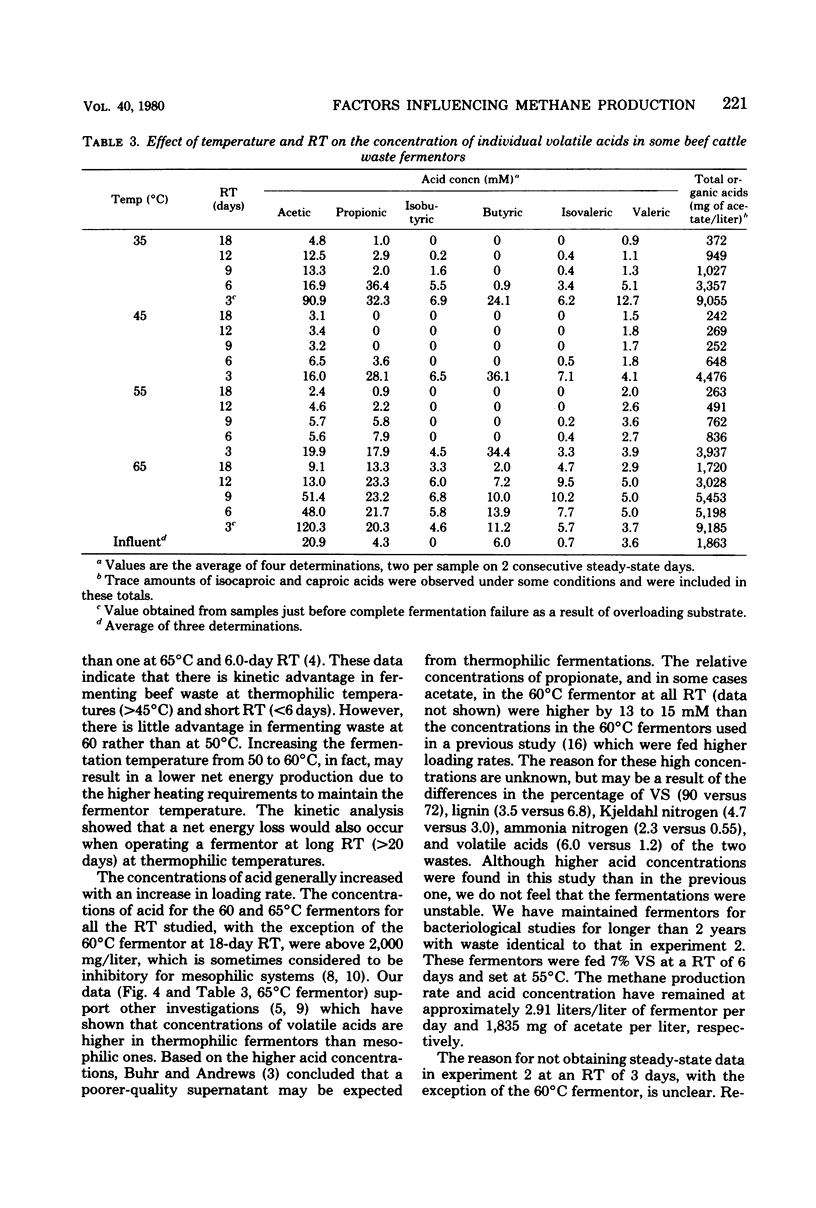
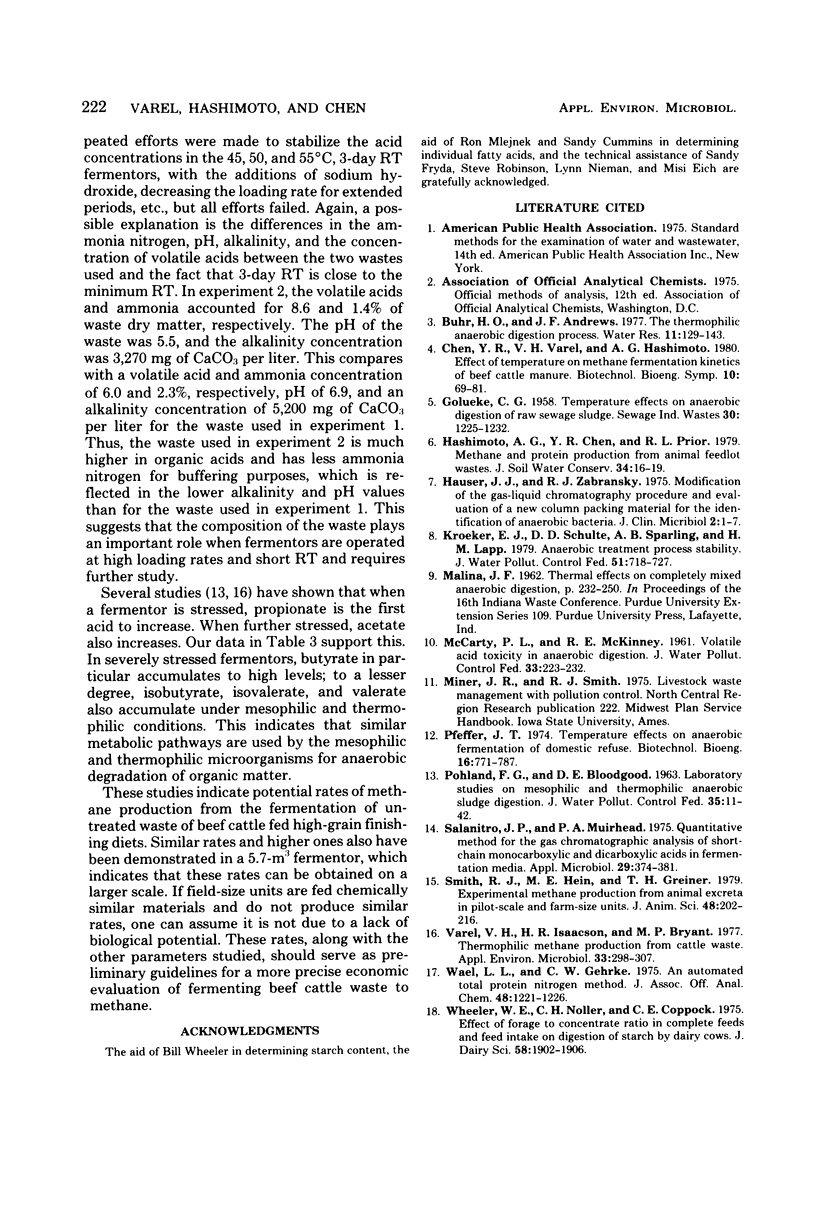
Selected References
These references are in PubMed. This may not be the complete list of references from this article.
- Hauser K. J., Zabransky R. J. Modification of the gas-liquid chromatography procedure and evaluation of a new column packing material for the identification of anaerobic bacteria. J Clin Microbiol. 1975 Jul;2(1):1–7. doi: 10.1128/jcm.2.1.1-7.1975. [DOI] [PMC free article] [PubMed] [Google Scholar]
- Salanitro J. P., Muirhead P. A. Quantitative method for the gas chromatographic analysis of short-chain monocarboxylic and dicarboxylic acids in fermentation media. Appl Microbiol. 1975 Mar;29(3):374–381. doi: 10.1128/am.29.3.374-381.1975. [DOI] [PMC free article] [PubMed] [Google Scholar]
- Varel V. H., Isaacson H. R., Bryant M. P. Thermophilic methane production from cattle waste. Appl Environ Microbiol. 1977 Feb;33(2):298–307. doi: 10.1128/aem.33.2.298-307.1977. [DOI] [PMC free article] [PubMed] [Google Scholar]
- Wheeler W. E., Noller C. H. Effect of forage-to-concentrate ratio in complete feeds and feed intake on digestion of starch by dairy cows. J Dairy Sci. 1975 Dec;58(12):1902–1906. doi: 10.3168/jds.s0022-0302(75)84806-5. [DOI] [PubMed] [Google Scholar]


